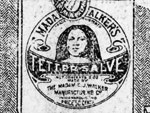State of the Union

Presidents from George Washington to Barack Obama have delivered 214 State of the Union addresses, some delivered orally and many more only written. This website makes the full text of all addresses available and fully searchable, and has done some innovative work text-mining these speeches to examine "changes in the language of the State of the Union address over the past 200 years."
A good place to begin is the website's Essay section, which gives a brief history of the State of the Union address, and describes some of the project's most interesting findings. The website's most prominent feature is a series of graphical representations of the most frequently used words in each address, which allows users to compare those words to those of any other speech.
Another tool allows users to compare the usage of two words in all addresses delivered. Comparing "war" and "peace," for example, reveals that these words have been used in 206 of the addresses, and that the word "war" alone has been used more than 2,600 times, compared to 1,821 usages for "peace."
Indiana Historical Society Digital Image Collections

This website boasts a growing collection of more than 38,000 photographs, lithographs, letters, cards, poems and other texts centering around Indiana history from the early 19th century to the present. The collection is especially strong in African American history in Indiana, with browseable collections on Madam C.J. Walker (18671919), a nationally renowned businesswoman and philanthropist, Flanner House, the first agency in Indianapolis devoted to meeting the social service needs of African Americans, and the Indianapolis Recorder, the longest continually operated African American newspaper in Indiana.
In addition to that of Madam C.J. Walker, there are collections of roughly 100 images each related to other notable Hoosiers. The website also contains a collection of more than 1,000 items related to President Lincoln, including portraits and busts of the president, as well as documents surrounding the trial of the Lincoln assassination conspirators. Other notable collections include one devoted to military history, several collections of images and portraits of Native Americans from the mid-19th century, and close to 200 historical maps of Indiana. All content is keyword searchable.